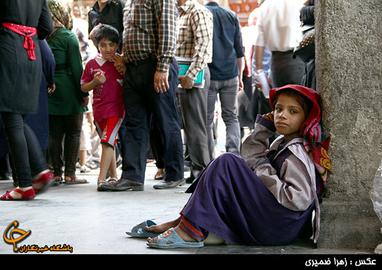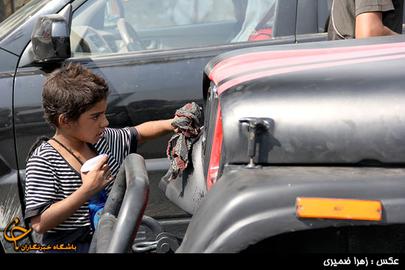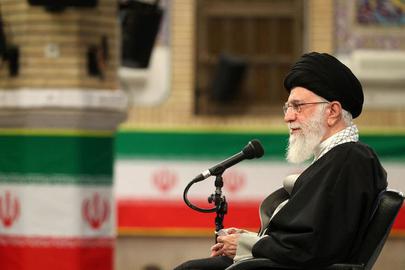The Iranian Welfare Organization was formed about seven months before the Islamic Revolution of 1979, a merging of 16 different bodies, with the aim of creating a coherent and coordinated social support operation.
The new body was to mediate between government, charities and people in need. It had 52 work areas, including caring for abandoned children, women and heads of household, community mental health, childcare, the needs of the elderly and the disabled, as well as homeless people, child laborers, women made vulnerable through abuse, their marriages, divorce, and other contacts. The list went on.
Such a job description is extensive by the standards of a developed country, let alone for Iran, a country that has not seen a good day for half a century.
Since the establishing of the Welfare Organization, Iranians have endured a revolution and regime change, a long and costly war, massive migrations, severe economic crises, sanctions, uprisings; one of these crises alone can take a society to the brink of collapse. And in Iran they have all happened at the same time. It is only natural that Iran has an unusually high measure of social damage.
Addressing such an unusual situation goes beyond the purview of any single institution – especially one that has not enjoyed any structural stability in its 40-year history. The Welfare Organization has changed hands during its 40-year history, passing from ministry to ministry; instead of being a strong independent entity, it has become a government subsidiary. Today it is under the auspices of the Imam Khomeini Relief Foundation – at best a public charity but usually almost totally unresponsive to needs.
The Imam Khomeini Relief Foundation, a revolutionary institution supervised by the Iranian supreme leader, which like other organizations under the Ayatollah Ali Khamenei’s supervision has grown and devoured other government institutions.
Forty years after it was founded, the Relief Foundation has become a large and wealthy organization with political, social, and economic influence across the country and in the region. The Relief Foundation is meant to support deprived and low-income families, as well as dealing with poverty, serving communities, running educational programs and addressing a range of social ills.
The 2020 budget for the Welfare Organization is about 4,140 billion tomans, or $306 million, of which 1,300 billion tomans, or $96 million, is dedicated to "enforcing the Disability Protection Act." But the Imam Khomeini Relief Foundation's budget is estimated at about 5,100 billion tomans, or $377 million. And this is only part of the Relief Foundation's overall funding. Reports of its financial performance have been published in previous years, but for recent years, no one knows how much the Relief Foundation's actual funding is and how it is spent.
The situation perhaps sheds some light on the limitations of the welfare system in Iran. Beyond the challenges of managing such bodies, and the government corruption affecting public institutions across Iran, there is also a philosophical problem; the Welfare Organization has big goals, but it is tasked with an impossible mission.
Comparing the Welfare Organization and its capacities to the scale of child labour and child street homelessness, for example, demonstrates the gap between crisis and crisis management.
Government measures to protect street children and vulnerable women
Farideh Reihani, a journalist, said in a BBC Persian report this summer that "in the past 35 years, there have been nearly 30 different projects [for] street children, and almost all of them failed."
A 1998 program, to establish centers “for the collection, identification, and guidance of street children and beggars;” and again in 1991, to build "centers for identification, diagnosis, and replacement of street children;” as well as a 2002 project to "organize 20,000 street children;” as well as attempts to build a “street children hostel” and to protect child laborers living on the street, have never managed to address the scale of this crisis in Iran.
Fourteen years have passed since Iran’s government adopted a set of regulations for addressing the issue of child labor and child homelessness – and no major change has taken place.
A key reason for these failures have been financial and administrative constraints.
Official statistics in Iran show that there are about half a million child laborers, two-thirds of whom fall within internationally-recognized standards of the term. The street children population, meanwhile, is in the tens of thousands.
The Welfare Organization – alongside 11 other bodies – is required to provide shelter, services and “empowerment” to these children.
But statistics from the Welfare Organization’s own statistical yearbook, in 2018, show that there were only 31 street children empowerment centers in Iran, with an admission rate of less than 6,200 children.
Financial constraints, as well as difficulties in identifying and attracting street children, are some of the reasons for the low number of supported children. But there are other limitations as well. One is that support services are meant to be provided only to Iranian nationals.
According to a member of the board of directors of the Society for Protecting Children's Rights, "we introduced telephone line 123 [for social emergencies] to child workers, but they said that after contacting the center, they had been told that counseling services are only for Iranian children. However, under the Convention of Child's Rights, which Iran has also accepted, the government is obliged to support all children living on its territory, both Iranian nationals and other nationals, immigrants and non-immigrants.”
It is estimated that more than 60 percent of child laborers are foreign nationals who lack access to support services in Iran.
The same situation applies to vulnerable women. According to the data published in the Welfare Organization’s statistical yearbook, in 2018 there were 27 centers to support or rehabilitate women and girls who were vulnerable in some form, as well as 26 "safe houses" (eight government-run, 18 not run by the government), and 30 "health homes" in the country.
But during the past year, only 1,400 affected women around Iran have visited the support and rehabilitation centers. The number of those housed in safe houses was about 1,350 women, who were affected by domestic violence, and in 2018 only about 500 girls who had run away from their homes had stayed in health homes.
No official estimates for the number of impaired women and run-away girls are available. But it is sage to say that, in Iran, the numbers of women affected by all forms of social ills are far higher than those reported in official reports. These women are deprived of government support for a variety of reasons, including restrictions on support services.
visit the accountability section
In this section of Iran Wire, you can contact the officials and launch your campaign for various problems



























comments